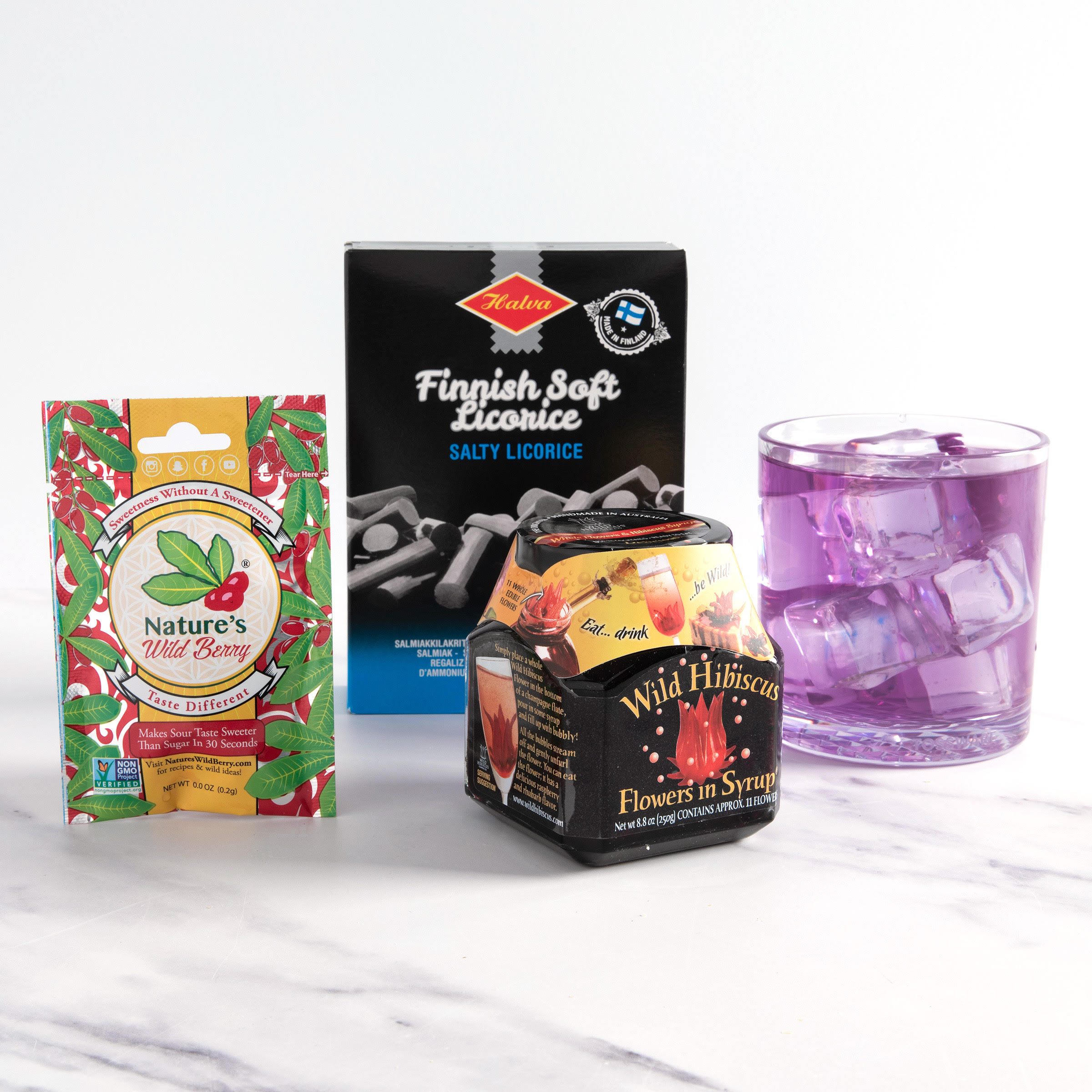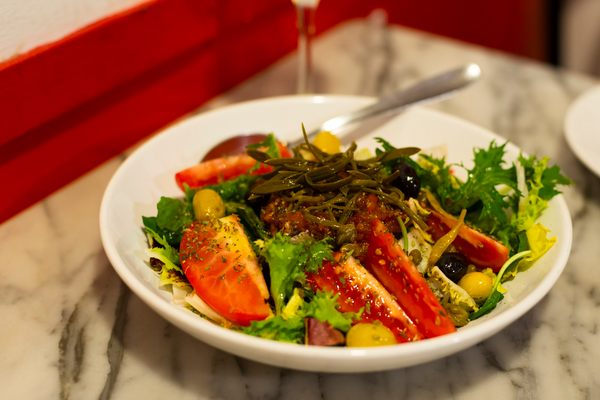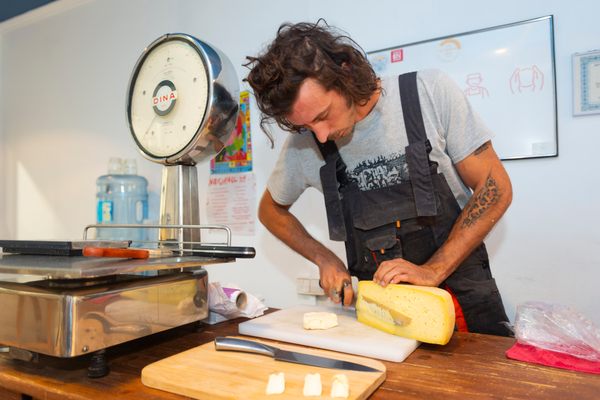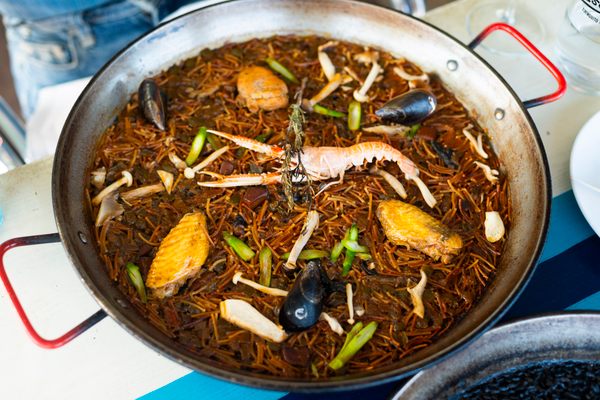Flavor Trip With the New Gastro Obscura Box
Try miracle berries, canned bread, and more.
We published our book, Gastro Obscura: A Food Adventurer’s Guide, on October 12th. Since then, we’ve hosted launch parties in Manhattan, in Chicago, and, as of next weekend, in Portland. The star of these celebrations is not a person, but a vending machine. Our customized friendly robot dispenses everything from canned bread to taste-changing berries to color-changing flower powder.
At each stop, I’ve been delighted to see a ravenous turnout. In Union Square, New Yorkers ran us out of black garlic and miracle berries while we spun edible wildflower cotton candy. We came better prepared to Chicago, and the city’s adventurous denizens did twice as much damage in half the time. Sugar skulls, far-flung sodas, and fermented tea cakes dropped delicately from the machine thanks to a moving “floor” that rose to meet each item.
The unique foods in our book, this vending machine, and finally, our new ‘A Taste of Gastro Obscura’ gift box (which you can buy here!), reflect years of our team’s obsessive research, writing, and curation. Now, we can bring these gems to you in physical form. After covering more than 500 obscure treats for Gastro Obscura, it’s a thrill for me to be able to share some snacks and their stories with you, wherever you are.
We’ve created a box that contains an edible journey. Inside, you’ll find 13 culinary wonders from around the world, hand-picked by our team, and shipped to you by iGourmet.
‘A Taste of Gastro Obscura’ Gift Box

We only made 500 of these treasure chests, so order now!
When life gives you lemons…
Miracle berries make ‘em taste like lemonade. The first time I tried one, I overzealously munched an entire lemon as if it were an orange. A word to the wise: This is unwise. Citric acid still burns going down, but in this case, it tastes great. Eating one of these West African fruits alters the taste of food for up to an hour, turning sour flavors sweet as they hit your tongue. In 1968, scientists isolated the unique protein that causes this sensation and named it miraculin. It binds to taste buds, lingering on sweet receptors, activating them only in sour environments. Once the fruit takes effect, goat cheese tastes like cheesecake. Miraculous.
When life gives you lemonade…
Butterfly pea flower will turn it violet. This Southeast Asian blossom has the power to turn elixirs from azure to purple to pink. All this mood ring–esque natural dye needs is the addition of an acid. Stir the indigo powder into water, then add lemon juice and watch the liquid start to change colors. I recommend eating a miracle berry or adding honey to make cosmic-looking lemonade. Cocktails are also a joy to play around with—at the Chicago launch party, we served one with bourbon, Tupelo honey, lemon, and butterfly pea powder.
Start with a single drop
What’s so hot, it’s served with an eyedropper? Akabanga chili oil, made from Rwandan Scotch bonnet peppers (heat rating: more than 150,000 Scoville units). Invented by a young mandazi vendor seeking to distinguish his fried dough ball stand, the condiment has since garnered a cult following. Akabanga roughly translates from the Kinyarwanda language to “secret”—an allusion to its surprising heat. This smoky, spicy elixir goes wonderfully with savory, salty flavors, but let me reiterate: Start with a single drop.
A forgotten fall delight
“Apple molasses,” or boiled cider, is a traditional sweetener that celebrated its heyday in colonial New England. Since 1882, Vermont’s Wood family has made apple molasses from scratch by reducing their farm’s fresh cider into a thick, gooey, dark syrup. Stirring the substance into hot water makes a comforting cup of instant cider, but my preferred autumnal brunch power move is to gently warm and drizzle it over French toast.
Gastro Obscura covers the world’s most wondrous food and drink.
Sign up for our regular newsletter.
























Follow us on Twitter to get the latest on the world's hidden wonders.
Like us on Facebook to get the latest on the world's hidden wonders.
Follow us on Twitter Like us on Facebook